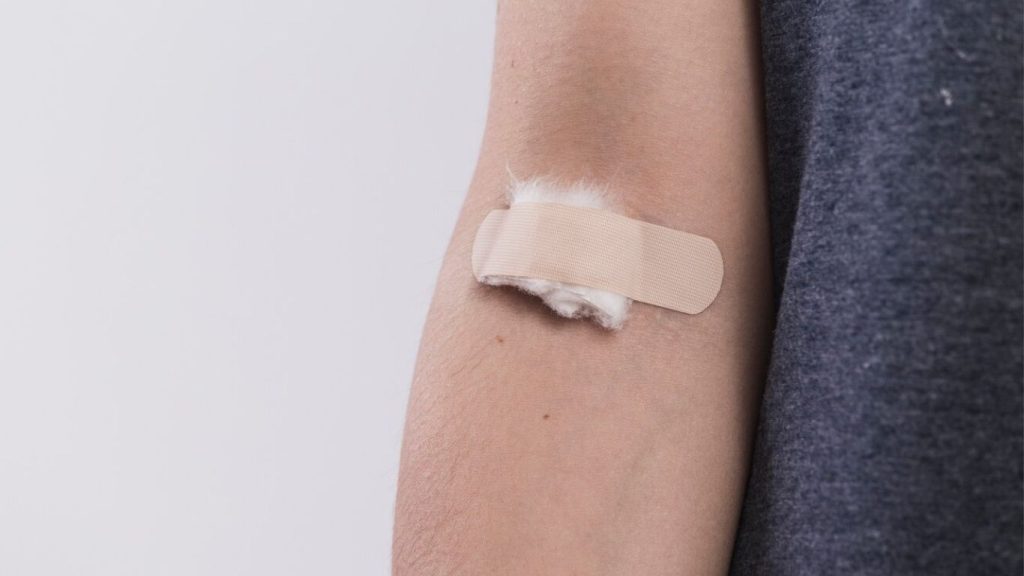Blood thinners, or anticoagulants, are life-saving medications for people at risk of blood clots, such as those with atrial fibrillation, deep vein thrombosis, or those who have had a heart valve replacement. However, these medications do come with a major side effect: increased bleeding.
Bleeding on blood thinners can be concerning, but understanding how to effectively manage it is crucial. Here, we guide you through steps to stop bleeding when on blood thinners.

Understanding Blood Thinners
Blood thinners decrease your blood’s ability to clot, reducing the risk of clots forming in your blood vessels. They are vital for preventing stroke and heart attack but make even minor injuries potentially hazardous.
Be Prepared: Have a Kit Ready
Always be ready for potential bleeding episodes:
- First Aid Kit: This should include sterile gauze, bandages, and adhesive tape. Having these at hand can be crucial in managing bleeding quickly.
- Ice Packs: Applying cold can constrict blood vessels, slowing down bleeding.
- Medical ID: Wear a medical ID bracelet or necklace that informs others you’re on blood thinners.
Treating Minor Cuts and Scrapes
For small wounds:
- Apply Pressure: Use a clean cloth, gauze, or your hands (if nothing else is available) to apply steady pressure to the wound.
- Elevate: If possible, raise the wound above the level of the heart. This helps reduce blood flow to the area.
- Use Ice: Apply an ice pack (wrapped in a cloth) to constrict blood vessels.
- Bandage the Wound: Once bleeding has slowed or stopped, clean the wound with water and apply a bandage.

Managing Nosebleeds
Common, but usually not serious:
- Pinch Your Nose: Hold the soft part of your nose, and lean forward slightly.
- Breathe Through Your Mouth: This helps reduce the amount of blood that may enter your throat.
- Apply Ice: Put an ice pack on the back of your neck.
Dealing with More Severe Bleeding
For deeper cuts or wounds:
- Apply Firm Pressure: Use gauze or a clean cloth to apply pressure. If bleeding soaks through, add more gauze, but do not remove the initial layer.
- Seek Medical Attention: If bleeding doesn’t stop after 15 to 20 minutes of pressure, it’s crucial to seek professional help.
Internal Bleeding
If you suspect internal bleeding, which may manifest as unusual pain, swelling, or discomfort, a headache, dizziness, weakness, or blood in urine or stool, seek emergency medical attention immediately.
Safety Precautions to Minimize Bleeding Risk
Preventing injuries that lead to bleeding is equally important:
- Be Careful: Avoid activities that might lead to cuts or bruises.
- Wear Protective Gear: Use gloves when using sharp objects, and wear shoes to protect your feet.
- Gentle Grooming: Use an electric shaver instead of a razor and a soft toothbrush to prevent gum bleeding.
- Protect Your Skin: Use sunscreen and insect repellent to avoid sunburns and bug bites that may lead to scratching.
Dietary Considerations
Certain foods can interact with your medication:
- Limit Vitamin K: For those on warfarin, avoid sudden changes in your vitamin K intake, found in green leafy vegetables.
- Avoid Alcohol: Drinking can increase your risk of bleeding.
Communicate with Healthcare Providers
Always inform your healthcare providers, including dentists and other specialists, that you’re on blood thinners before undergoing any procedure.
Regular Monitoring
Frequent blood tests will help your healthcare provider adjust your medication dosage to maintain a balance between preventing clots and excessive bleeding.
Know When to Seek Help
Understanding when bleeding is an emergency is vital. Seek immediate medical attention if you experience severe bleeding, bleeding that doesn’t stop, or if you have signs of internal bleeding.

Conclusion
Managing bleeding while on blood thinners requires careful attention and proactive measures. By being prepared, understanding how to address different types of bleeding, and taking precautions to prevent bleeding, you can safely continue your daily activities while benefiting from the protective effects of blood thinners. Always consult with healthcare professionals for personalized medical advice and treatment.
Frequently Ask Questions
Blood thinners, or anticoagulants, are medications that reduce the blood’s ability to form clots. They are often prescribed to prevent strokes, heart attacks, and other conditions caused by blood clots.
Since blood thinners reduce the clotting ability of the blood, even minor injuries can result in prolonged bleeding compared to individuals not on these medications.
Apply steady pressure to the wound using a clean cloth or gauze, elevate the wound if possible, use ice to constrict blood vessels, and bandage the wound once bleeding has slowed or stopped.
Pinch the soft part of your nose, lean slightly forward, breathe through your mouth, and consider applying an ice pack to the back of your neck. If bleeding doesn’t stop after 20 minutes, seek medical attention.
Symptoms of internal bleeding include unusual pain, swelling, discomfort, dizziness, weakness, headaches, or the presence of blood in urine or stool. If you suspect internal bleeding, seek emergency medical care immediately.
Yes, being careful in daily activities, using protective gear like gloves when handling sharp objects, gently grooming (using electric shavers), and protecting the skin from injuries can help minimize risks.
It’s crucial to remember that while blood thinners increase the risk of bleeding, they play an essential role in preventing life-threatening blood clots. Regular consultation with healthcare professionals can help manage risks effectively.

[…] Read Also : How to Stop Bleeding When On Blood Thinners […]